A good friend of mine was looking for some small trees to add to her garden. She wanted trees that produced flowers and fruit, for she was interested in feeding the birds and other wildlife. She also wanted to provide food for butterfly and moth caterpillars.
Her list of “must haves” included:Crape myrtle (
Lagerstroemia indica) from IndiaGolden rain tree (
Koelreuteria paniculata) from China, Japan, Korea Banana shrub (
Magnolia figo) from ChinaSaucer magnolia (
Magnolia ×soulangeana) from ChinaTea olive (
Osmanthus fragrans) from ChinaChaste tree (
Vitex agnus-castus) from Europe, Asia Bottlebrush tree (
Callistemon rigidus) from Australia Bradford pear (
Pyrus calleryana ‘Bradford
’) from Korea and China
Did you notice that not one of these trees is native? Even though they are beautiful, none of them will benefit wildlife in the way my friend intends. It’s true that some of them will attract bees and butterflies who visit them for their nectar, but when a native butterfly or other insect looks for a place to lay an egg, these plants will not be chosen. When a bird looks for a caterpillar to feed its young, these trees will be passed over. Selecting plants to support wildlife is something we must think about if we wish to continue to see the insects and birds that have shared our spaces for eons.
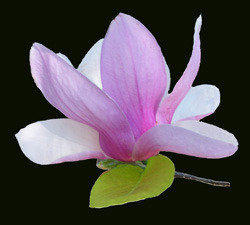
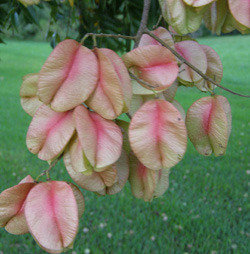
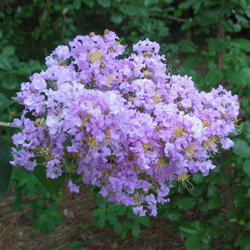
I have only to look at my friend’s list of desired plants and to observe landscape plantings in my own yard to realize that most of us did not have the needs of wildlife in mind when we installed our landscapes. We’ve been thinking of the pretty flowers and purely ornamental qualities of the plants we have chosen to put in our gardens. Additionally, we have tried to choose “pest free” plants believing that these would be the most carefree.
Now many of us are realizing the error of our ways, and we are making different decisions regarding our landscapes. We are choosing native plants that share an evolutionary history with the insects and creatures in our area. When a native tree is cut, habitat is removed for dozens of specialized insects that feed on that plant. By replacing it with an exotic plant, we have not made up for the absence of the native plant, because the plant eaters that fed on the native plant cannot eat the alien plant. The insects, birds, and small mammals that depended on it will move out of the area in search of plants that offer the insects they prefer. Butterflies and moths are particularly affected. Most of them feed on one particular host plant or groups of plants. When their host plants are not present, no caterpillars will be found for birds to feed their young.
Since 2008,
Southern Living has offered a collection of plants especially suited to Southern gardens. The list for 2015 includes five new varieties of Salvia, four new Joy of Living® daylilies and four new Delta Series crapemyrtles. Other debuts include Chef’s Choice® rosemary, Festuca ‘Beyond Blue’, Nandina ‘Lemon Lime’, banana ‘Poquito’, Digiplexis ‘Illumination Flame’, and Gardenia Scentsation™. From these selections, I am saddened to see that the vast majority of recommended plants are exotic species. While these new plants may be beautiful, they offer very little to wildlife.
My recent observations and shifts in thinking have led me to believe it is time to correct some of my past mistakes. This spring may find me removing some crape myrtle trees and exotic azaleas and replacing them with native species. For my neighbor, I will recommend these natives:Sparkleberry (
Vacinnium arboreum) Zones 6-9Chickasaw plum (
Prunus angustifolia) Zones 6-9Southern magnolia (
Magnolia grandiflora) Zones 6-10Grancy graybeard or fringe tree (
Chionanthus virginicus) Zones 3-9Redbud (
Cercis canadensis) Zones 4-9Red buckeye (
Aesculus pavia) Zones 5-9Downy serviceberry (
Amelanchier arborea) Zones 4-9Two-winged silverbell (
Halesia diptera) Zones 6-8
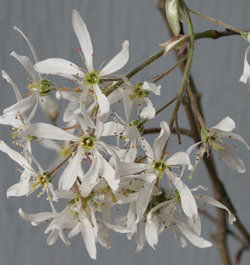
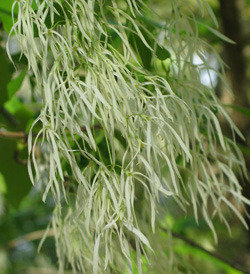
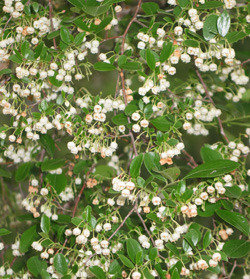
People take up increasingly large amounts of land for their uses. According to Laura Tangley, senior editor of
National Wildlife, more than half the global population lives in metropolitan areas, and this number is expected to increase to 70 percent by 2050. Based on this information, we realize that the natural areas that once provided habitat for wildlife is rapidly disappearing. Consequently, if we want to continue to see wildlife, we must provide habitat for them in the urban places where we live. We must plant the native plants upon which they depend.











 People take up increasingly large amounts of land for their uses. According to Laura Tangley, senior editor of National Wildlife, more than half the global population lives in metropolitan areas, and this number is expected to increase to 70 percent by 2050. Based on this information, we realize that the natural areas that once provided habitat for wildlife is rapidly disappearing. Consequently, if we want to continue to see wildlife, we must provide habitat for them in the urban places where we live. We must plant the native plants upon which they depend.
People take up increasingly large amounts of land for their uses. According to Laura Tangley, senior editor of National Wildlife, more than half the global population lives in metropolitan areas, and this number is expected to increase to 70 percent by 2050. Based on this information, we realize that the natural areas that once provided habitat for wildlife is rapidly disappearing. Consequently, if we want to continue to see wildlife, we must provide habitat for them in the urban places where we live. We must plant the native plants upon which they depend.